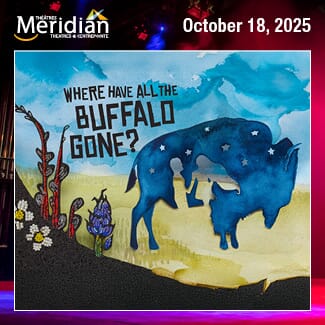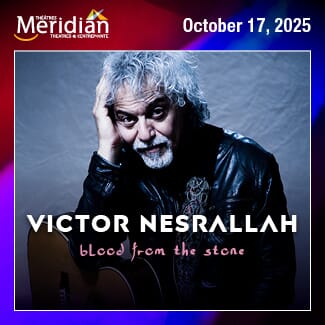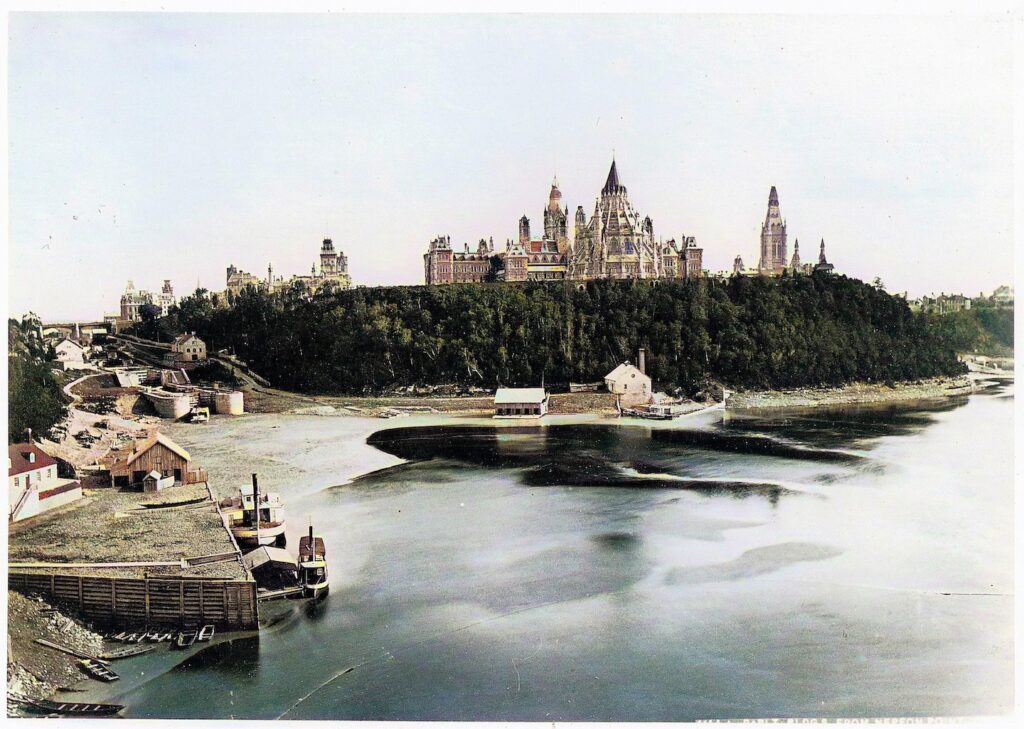
Parliament Buildings from Kiweki Point (formerly Nepean Point), between 1878-80. George Stirling’s stone house and Dominion bottling storehouse visible on wharf (near left). (Orig. photo by Notman & Sandham – colourized by Ashley Newall)
Scottish-born George Stirling (1819–1880) owned Ottawa’s (first) Dominion Brewery and was a pillar of local society. And that’s just about all I know about the man–very few personal details could be found. Regarding his brewery, it had three major things going for it: location, location, location!
Situated at the foot of the Rideau Canal locks on the Ottawa River, Stirling’s brewery was well-placed right on the doorstep of the bustling ByWard Market. From a legacy perspective, the brewery was photographed so often that it’ll live on forever.
George first pops up in Bytown records in 1851, in the Canada Directory (listed as a brewer living on Rideau St.), plus in that year’s census alongside his father, John. In the census, John is also listed as a brewer, and he went out of his way to declare that he absolutely, positively wasn’t manufacturing anything, honest! That same year, John obtained a license for a beer cart, as did the local Victoria Brewery’s John Rochester. (They were most likely for transporting kegs.) And so, brewing ran in George’s family.
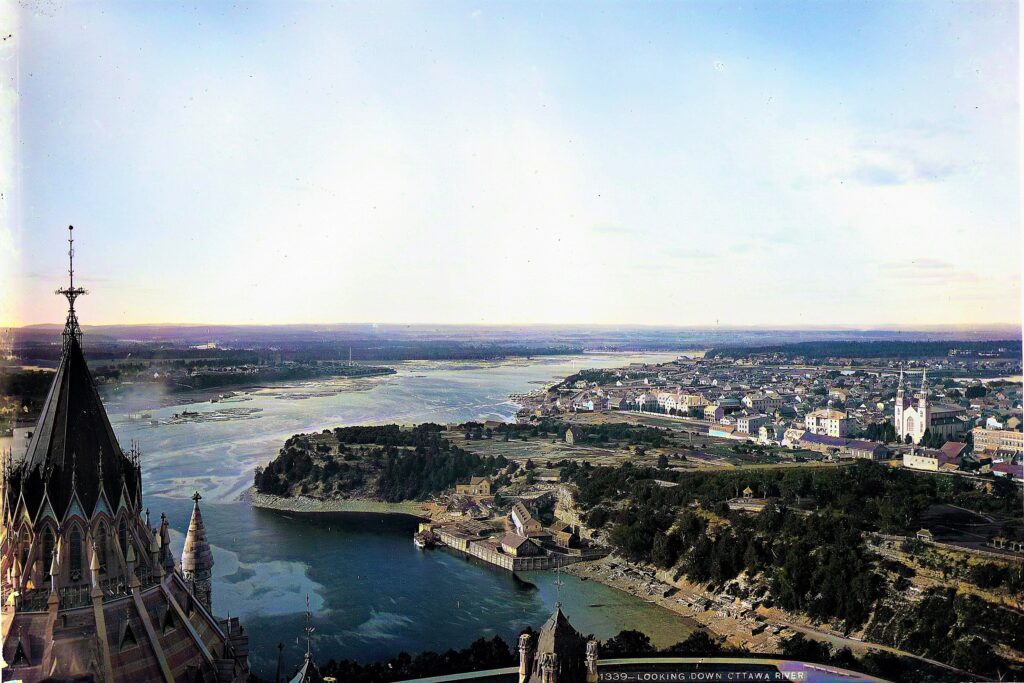
Looking down river from Parliament Buildings, about 1885. Long narrow building on wharf is brewery with stone house attached at front, and front corner building is bottling house. (Orig. photo by Notman & Son – colourized by Ashley Newall)
In 1852, a curious ad appears in the Ottawa Daily Citizen regarding a “well-known” property for rent on Kiweki Point (formerly – until recently – known as Nepean Point), previously home to a brewery run by one Godfrey Berry. It’s noted that the property “is well situated for persons heavily engaged in the Lumber Business,” suggesting it was located at the water. It seems likely that this would soon become the base of operations for George’s Dominion Brewery.
The earliest reference to “Stirling’s Brewery” on what would soon become known as “Stirling’s Wharf,” on Kìwekì Point at the foot of the locks, appears in 1858. The wharf had been known prior as Fitzgibbon’s Wharf and was also referred to as the “old steamboat landing,” the establishment and use of which went back to the building of the Rideau Canal.
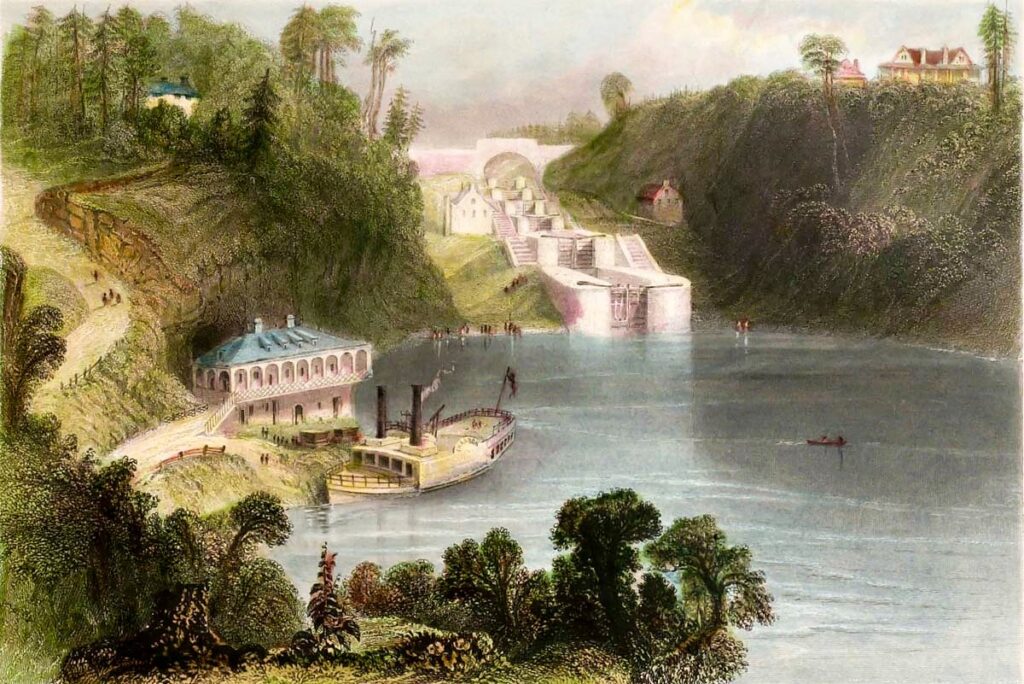
Fitzgibbon’s Wharf aka ‘old steamboat landing,’ Bytown. (By W.H. Bartlett, from “Canadian Scenery Illustrated,” 1842 – via Lost Ottawa)
Stirling’s Wharf was also a launching point for The Ottawa and Hull Ferry, a necessity in the years before the Alexandra Bridge. Such a service continues today–what was once a horse-powered ferry is now a battery-powered pontoon boat.
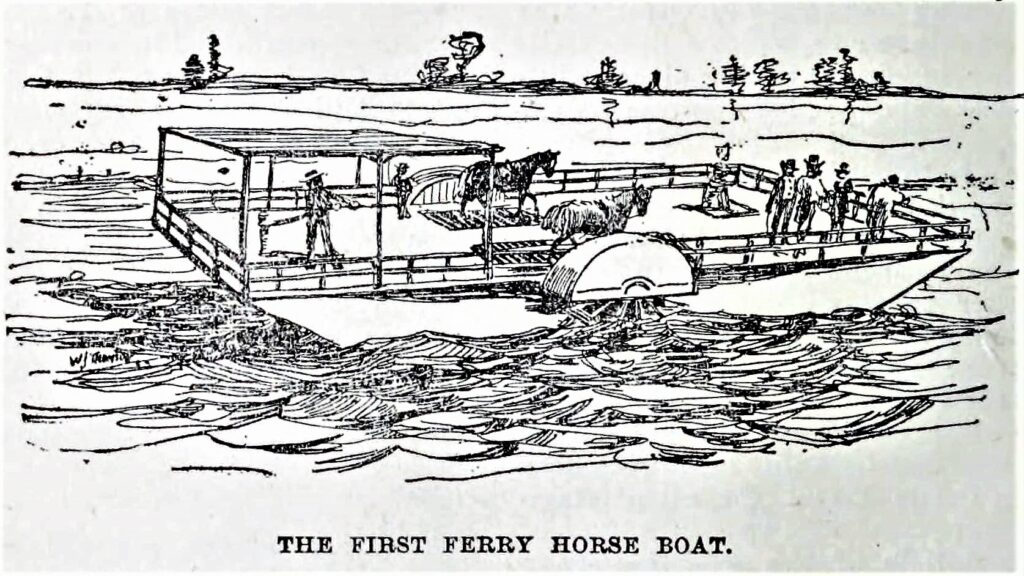
Horse-powered Toronto Island ferry, ca. 1840s. (From “Landmarks of Toronto” by J. Ross Robertson, 1894)
In the old days, Entrance Bay below Parliament was filled to the brim with timber.
“Mr. Graham says he remembers the time, when square timber rafting was at its height, that the whole river between Ottawa and Hull would be literally filled with rafts. He tells about crossing all the way between Stirling’s Wharf and Hull, from raft to raft, so close were they together. ‘In those times,’ he said, “it was great sport to go to Parliament Hill at night and listen to the raftsmen singing on the river below and see their campfires on the rafts. It was just like going to a concert.'” [Ottawa Citizen–May 19, 1923]
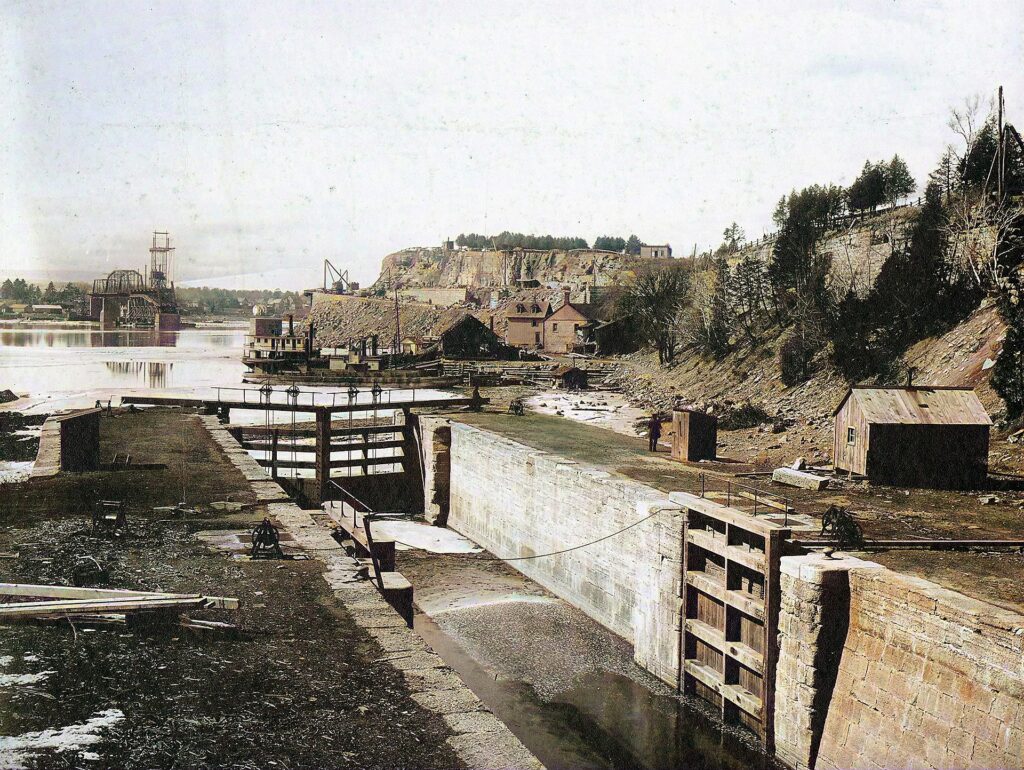
Construction of the Alexandra Interprovincial Bridge, 1899. (Orig. photo by William Morrell Harmer via Bytown Museum – colourized by Ashley Newall)
Ottawa had plenty of breweries in the 19th century, making for plenty of competition with George’s Dominion. There was Burke’s Brewery on George St. in “Lower Bytown” (noted for sale in 1854), and the City Brewery on Sussex (advertised in 1861), which had been another brewery prior and would be yet another soon after, becoming Doyles Brewery by 1864. Then there was the Chaudière Brewery, selling “Parris & Smith’s celebrated Ales and Porters” (advertised in 1864), and Anderson and Horsey’s Carleton Brewery, “Brewers of Bitter and Mild Ales, Porter, &c.” (advertised in 1869). There was even a guy named R.P. LaBatt—owner of the Prescott Brewery—on the scene as of 1870. Not wanting to miss a party, Carling’s also showed up, selling “Amber or Pale Bitter Ale and Porter” from their location at 30 O’Connor St. (advertised mercilessly in 1880). Finally, there were Rochester’s Victoria Brewery (est. 1829) and Henry Brading’s Union Brewery (est. 1865), which–alongside Stirling’s Dominion–made up Ottawa’s very own “Big Three” in the 1870s.
(I’ve left several out for space, but for the record, Ottawa’s very first brewery was reportedly established by early settler Ralph Smith, located just west of Parliament Hill, and predating Rochester’s Victoria. Also for the record, Stirling’s Dominion specialized in ales.)
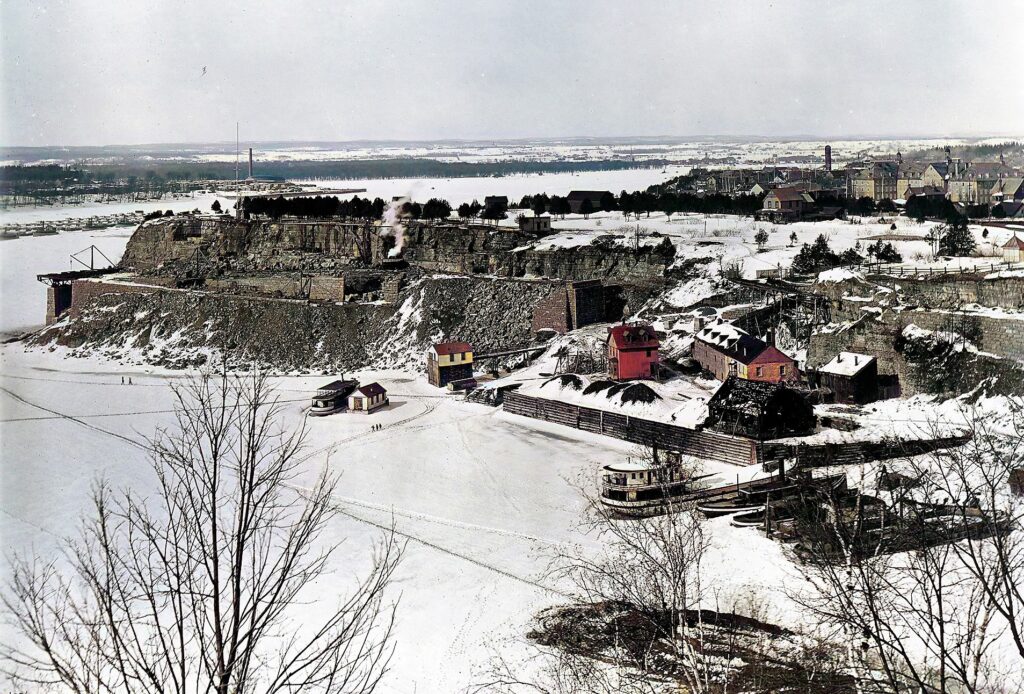
Kiweki Point (formerly Nepean Point) showing construction of Alexandra Bridge, March 1900. (Orig. photo via Bytown Museum – colourized by Ashley Newall)
George’s brewery was informally referred to in city directories as “Stirling’s brewery” until 1872, at which time the Dominion name first appears. There were other, better-known Dominion Breweries in Ontario in the 19th century, namely in Toronto and Hamilton, but back in those days, if you didn’t title your business—any business—“Victoria,” then next in line was “Dominion.” (A distant third was “Union.”)
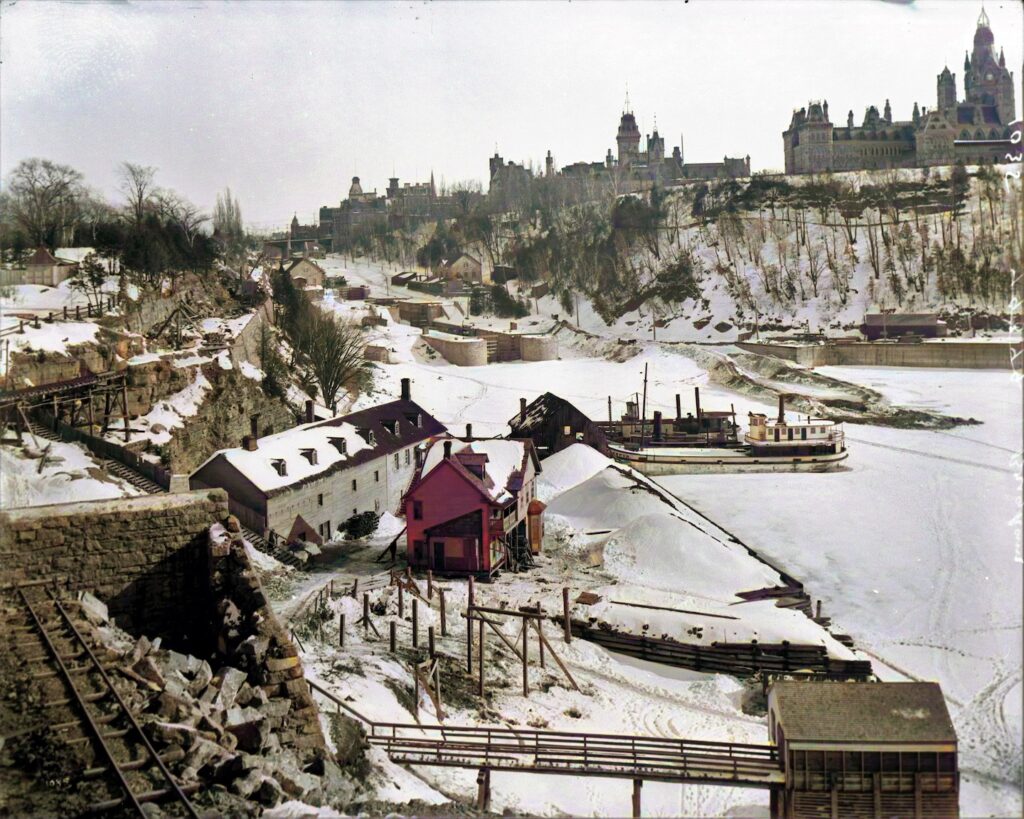
Stirling’s Wharf during Alexandra Bridge construction, March 1900. Near structure with elevated walkway associated with Ottawa & Hull Ferry. House in centre an independent residence, moved there out of path of train tracks. Long narrow building is brewery with Stirling’s stone house attached. Far corner is bottling storehouse, with cellar. (Orig. photo via Library & Archives – colourized by Ashley Newall)
More factoids about George: he was reportedly a lifelong bachelor who lived in a stone house attached to his brewery building at 16 St. Patrick St.
Upon Stirling’s passing in 1880, Dominion Brewery operations halted promptly and permanently. In 1885, the property was put up for auction, lock, stock, and barrel. (The land and buildings were part-owned and part-leased, and the accompanying lease for the balance was included in the sale.) This was evidently done to settle a dispute over his estate, and it’s possible that both the warring factions wanted to take over the brewery and resume the business. (The dispute pitted “Taylor vs. Stirling,” the latter likely being Dominion maltster William Stirling.)
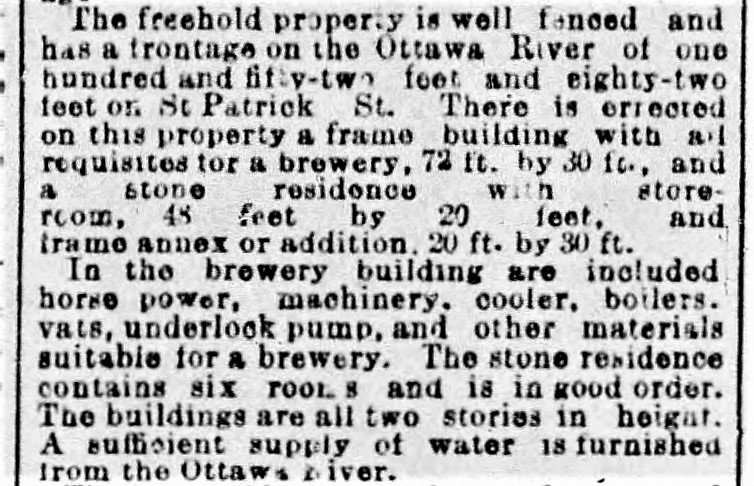
Dominion Brewery auction notice (excerpt). (Ottawa Daily Citizen – June 3, 1885)
The next occupant of 16 St. Patrick (Césaire Ethier) didn’t reboot the brewery. Still, he may have turned it into a minor distillery, if his 1892 charge for selling liquor without a license is any indication.
By 1902, the brewery building and bottling house were gone. By the early 1950s, Stirling’s Wharf had also been removed, undoubtedly as part of the Greber Plan.
Nowadays, Ottawa once again has a plethora of breweries, including the Dominion City Brewing Co., whose name is an echo of George’s old brewery on the wharf (whether intentional or not). And so, his brewery’s legacy lives on, beyond all the photos of the iconic scene in which it appears.
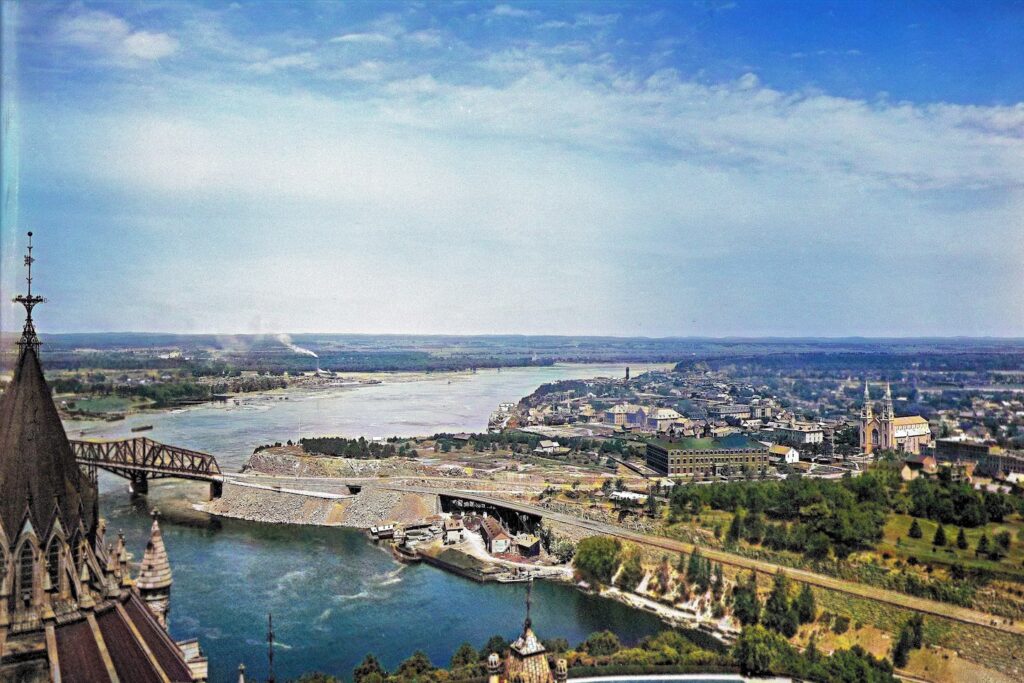
Looking down river from Parliament Buildings, ca. 1901. Bottling house is gone from the wharf, but brewery still standing. (Original photo by Notman & Son – colourized by Ashley Newall)
More on this story on Ashley Newall’s blog. Capital History Ottawa is on Twitter and Instagram.




